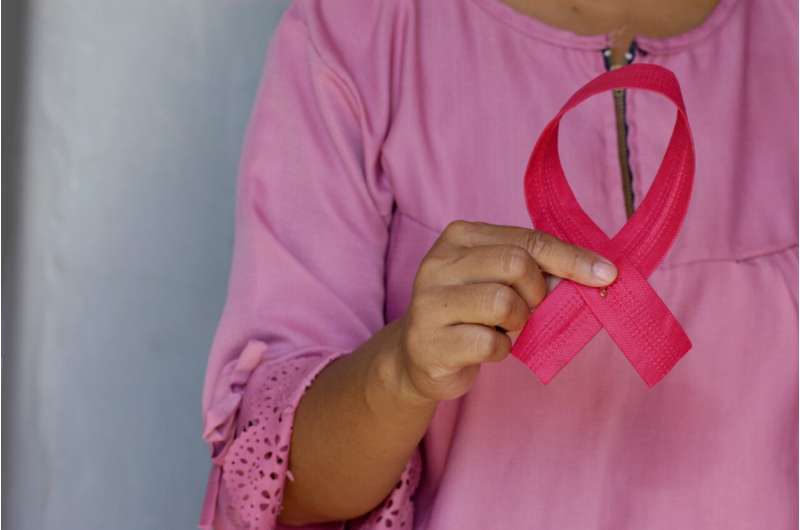This article has been reviewed according to Science X's editorial process and policies. Editors have highlighted the following attributes while ensuring the content's credibility:
fact-checked
peer-reviewed publication
trusted source
proofread
Combination therapy shows promise in subset of breast cancers

Combining two cancer drugs may be a promising treatment for advanced metastatic breast cancer, according to the results of a clinical trial published in JAMA Oncology.
Breast cancer is the most common cancer in women in the U.S., and roughly one in eight adult women will develop breast cancer in their lifetime, according to the American Cancer Society. A small percentage of women with breast cancer will go on to develop leptomeningeal disease, in which the cancer spreads to the cerebrospinal fluid, said Priya Kumthekar, MD, GME, associate professor in the Ken and Ruth Davee Department of Neurology's Division of Neuro-oncology and a co-author of the study.
"These so-called large-molecule treatments don't cross the blood-brain barrier or the blood-cerebrospinal fluid barrier, so the idea here was to inject the drugs directly into the cerebrospinal space to overcome that," said Kumthekar, who is also an associate professor of Medicine in the Division of Hematology and Oncology.
"Our previous work showed efficacy for these drugs, and here we've added a similar agent that has shown to be helpful with this type of breast cancer."
In the current clinical trial, nine women with ERBB2-positive breast cancer that had spread to their cerebrospinal fluid were given a combination of trastuzumab and pertuzumab, two drugs used to treat advanced cancers that had yet to be tested together when given intrathecally.
After roughly one year of the treatment, two patients exhibited shrinking tumors, while three patients exhibited partial shrinking and four showed no further tumor growth.
The findings indicate that the combination treatment is well-tolerated, and a follow-up trial will test the therapy further in a larger patient population, Kumthekar said.
"Hopefully these studies are the start of clinicians using drugs directly in the cerebrospinal fluid space more frequently because there's potentially more efficacy," Kumthekar said. "Historically there's been a lot of hesitancy to use drugs in that space just for fear of toxicity. Now that we have more momentum with studies like this, it shows we can help these patients more with minimal additional risk."
The next trial remains open and will gather more data around the safety and efficacy of this drug combination, Kumthekar said.
"This study demonstrates the importance of collaboration with investigators across the country," said Kumthekar, who is also director of the Brain Metastasis Program of the Robert H. Lurie Comprehensive Cancer Center of Northwestern University.
"By working together with institutions across the country for these difficult-to-treat diseases, we aim to give more hope to these patients with challenging disease."
More information: Kamran A. Ahmed et al, Radiation Therapy Followed by Intrathecal Trastuzumab-Pertuzumab for ERBB2-Positive Breast Leptomeningeal Disease, JAMA Oncology (2024). DOI: 10.1001/jamaoncol.2024.1299




















